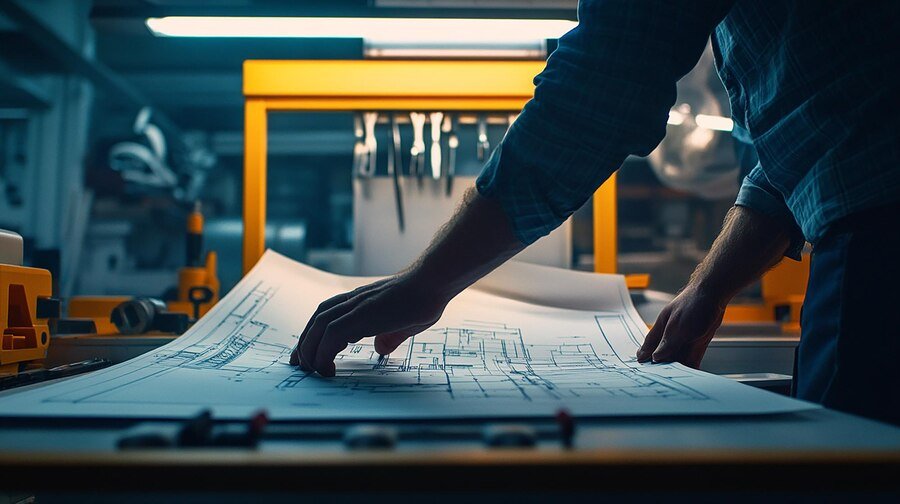When it comes to tackling home improvement projects or DIY endeavors, precision is everything. One term you’ll often encounter in the world of construction and design is “linear foot.” Understanding how to measure linear feet accurately can make a significant difference in your project’s success. Whether you’re planning to install new flooring, build a fence, or even create custom cabinetry, knowing how many linear feet you need will save you time and money.
But what exactly is a linear foot? Why should you care about measuring it correctly? And how do you go about determining the length needed for your materials? Dive into this guide and unlock the secrets of effective measurement that will elevate your project from good to great!
Understanding Linear Foot Measurement
Linear foot measurement refers to the length of an object measured in feet, without considering width or height. It’s a straightforward way to quantify materials that are long and narrow, making it essential for various projects.
This type of measurement is particularly useful when dealing with items like lumber, piping, or flooring. Instead of focusing on square footage or volume, you’re zeroing in on a single dimension—length.
For example, if you need to buy baseboards for your room renovation, measuring linear feet helps you determine how much material you’ll require. Simply put: measure the total distance where you plan to install them.
Understanding this concept can streamline your project planning process and ensure accuracy when estimating costs and materials needed down the line.
Why is it Important to Accurately Measure Linear Foot?
Accurate measurement of linear foot is crucial for any project involving materials. Whether you’re laying flooring, installing trim, or building a fence, precision matters. A small miscalculation can lead to wasted materials and unexpected costs.
When you know the exact length needed in linear feet, you can purchase just what you need. This not only saves money but also reduces waste—a significant consideration in today’s eco-conscious world.
Moreover, accurate measurements ensure that your projects fit perfectly within the intended space. Poorly measured installations often result in gaps or overlaps that compromise aesthetics and functionality.
For professionals and DIY enthusiasts alike, mastering linear foot measurement is an essential skill. It lays the groundwork for successful projects while enhancing overall efficiency and satisfaction with the final outcome.
Tools and Materials Needed for Measuring Linear Foot
To measure linear foot accurately, you’ll need a few essential tools. A tape measure is your primary instrument. Choose one that extends at least 25 feet for most projects.
A carpenter’s square can help ensure right angles when measuring corners or edges. This ensures precision in your layout.
Pencil and paper are vital for jotting down measurements. Keeping an organized record will save you time and confusion later on.
If you’re working with larger materials, consider a laser distance measurer. It provides quick readings without the hassle of maneuvering a long tape.
Having safety gear like gloves and goggles is important to protect yourself while handling materials during the measuring process. These simple tools make all the difference in achieving accurate measurements for any project involving linear foot calculations.
Step-by-Step Guide to Measuring Linear Foot
Measuring linear foot is straightforward. Start by gathering your tools: a measuring tape, a notepad, and a pencil.
Begin at one end of the area you wish to measure. Extend the measuring tape along the length you need to cover. Ensure it’s straight for an accurate reading.
Once you reach the other end, take note of the measurement where the tape meets that point. This number represents your linear feet.
If you’re working with multiple sections, repeat this process for each part. Write down all measurements clearly to avoid confusion later on.
For large distances or odd shapes, consider breaking them into smaller segments and adding them up afterwards. This method can enhance accuracy in tricky spaces.
Always double-check your measurements before purchasing materials or cutting any items based on these figures. Accuracy now saves time later.
Common Mistakes to Avoid When Measuring Linear Foot
Measuring linear foot seems straightforward, yet many slip up. One common mistake is not using a reliable measuring tape. A worn-out or bent tape can lead to inaccurate readings.
Another pitfall is ignoring the start and end points of your measurement. Ensure you’re measuring from the correct edge or corner for precision.
People often overlook accounting for curves and angles in their projects as well. Just because you have straight lengths doesn’t mean everything aligns perfectly.
Failing to double-check measurements can also result in costly errors. Always measure twice; it’s worth the extra time.
Don’t forget about environmental factors, either. Humidity and temperature can cause materials to expand or contract, affecting your final measurements significantly.
Practical Applications of Linear Foot Measurement
Linear foot measurement has a wide range of practical applications across various industries. In construction, precise measurements ensure that materials like lumber and drywall fit perfectly into the designated spaces. This precision directly affects the quality and strength of structures.
Interior design also benefits greatly from measuring in linear feet. Designers use this metric to determine how much flooring or wall coverings are needed, which helps avoid overspending on excess materials.
In landscaping, calculating linear footage allows homeowners to plan for fencing or garden beds accurately. It makes budgeting simpler when working with contractors as well.
Retailers often rely on linear foot measurement for shelving units and display cases. Knowing how much space is available helps them maximize product visibility while ensuring a tidy presentation.
Even in plumbing, understanding linear feet can assist in estimating pipe lengths required for installations or repairs, making projects run smoother and more efficiently.
Why is it Important to Measure Linear Foot?
Accurate linear foot measurement is crucial for various projects, from flooring installations to fencing. It helps determine the correct amount of materials needed, preventing waste and saving money.
When you measure in linear feet, you establish a clear framework for your project. This clarity aids in planning and execution. Whether you’re a homeowner or a contractor, knowing precise measurements ensures that everything fits perfectly.
Additionally, accurate measurements help avoid costly mistakes. Miscalculating can lead to overbuying or underestimating supplies, which ultimately impacts your budget and timeline.
In industries where precision matters—like construction or landscaping—getting it right the first time is essential. Accurate linear foot calculations enhance efficiency while maintaining quality standards throughout the project lifecycle.
Common Mistakes to Avoid while Measuring
Measuring linear foot can be tricky, and small missteps often lead to larger problems. One common mistake is neglecting to use a straight measuring tape or ruler. Curved surfaces can distort measurements, resulting in inaccuracies.
Another frequent error involves not double-checking your figures. Misreading the tape or skipping a point of reference might seem minor but will throw off your entire project.
People often forget about accounting for waste and additional material needed for cuts. Always add extra length when planning for installations; this buffer saves time and hassle later on.
Don’t overlook the importance of proper alignment. If you’re measuring along walls or edges, ensure everything is level before taking any readings. Precision matters significantly with linear footage!
Tips for Estimating Materials and Costs
Estimating materials and costs accurately is crucial for any project. Start by determining the total linear footage you need. This number will guide your material purchases.
Next, research prices from different suppliers. Costs can vary significantly, so shopping around can save you money. Don’t forget to factor in delivery fees if applicable.
Consider ordering a little extra material to account for waste or mistakes during installation. A good rule of thumb is to add 10% on top of your calculated needs.
When budgeting, include labor costs as well. If you’re hiring professionals, get quotes ahead of time to avoid surprises later on.
Always revisit your estimates as the project progresses. Adjusting costs based on actual usage helps keep your budget in check and ensures that everything runs smoothly without unnecessary delays or expenses.
Conclusion:
Measuring in linear feet is essential for anyone embarking on a project that involves length. Understanding how to accurately measure linear foot opens the door to effective planning and execution, whether you’re installing flooring, fencing, or landscaping.
Accurate measurement saves you from costly mistakes. It ensures you purchase the right amount of materials, allowing your project to run smoothly without unexpected delays.
Having the proper tools at hand can make all the difference. A measuring tape is a must-have tool for any DIY enthusiast or professional builder alike.
Following a step-by-step process helps streamline your measurements. Start by clearing the area and laying out your measuring tape along the desired path.
Avoiding common mistakes like misreading measurements can save time and resources. Double-checking your figures before making any purchases protects against wasteful spending.
Practical applications are endless—from home renovation projects to commercial construction—every job benefits from knowing how many linear feet are involved.
Estimating materials and costs based on accurate linear foot measurements leads to better budgeting decisions as well. Knowing what you need upfront allows for smarter financial planning.
With these tips in mind, you’ll be well-prepared for whatever project lies ahead that requires precise measurement of linear foot.








